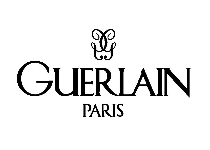Guerlain
In 1828, Pierre-Francois Pascal Guerlain set up the perfume business that bore his name in a small shop near the center of Paris. Guerlain created one-of-a-kind fragrances with his two sons, Gabrie...
In 1828, Pierre-Francois Pascal Guerlain set up the perfume business that bore his name in a small shop near the center of Paris. Guerlain created one-of-a-kind fragrances with his two sons, Gabriel and Aimé, at his side, and had enough business to open a flagship store in Paris in 1840. Thirteen years later, Pierre-Francois made his most popular fragrance yet, Eau de Cologne Impériale, which impressed the French royal family so much that he soon gained the title of His Majesty’s Official Perfumer, and began creating custom perfumes for other members of royalty, such as England’s Queen Victoria. Following this great success, Guerlain’s founding father passed away in 1864, leaving the house of perfume to his sons. At this point, Gabriel Guerlain took on a management and business role, while his brother Aimé inherited the title of master perfumer. Aimé Guerlain came up with several popular fragrances in the latter half of the 19th century, including Fleur d’Italie in 1884 and the famous Jicky in 1889. The third generation of Guerlain perfumers was replenished by Gabriel Guerlain’s two sons, Jacques and Pierre, with Jacques the next in line to inherit the master perfumer role. In the last decade of the 1800s and up through 1955, Jacques Guerlain put together some of Guerlain’s most well-known and successful fragrances of all time, including Mitsuoko in 1919 and Shalimar in 1925. Jean-Paul Guerlain was the last family master perfumer. He retired in 2002, but continued to serve as advisor to his successor until 2010, when racist remarks made on French television by Guerlain regarding the racial inspiration for his scent Samsara, led to his termination. With no heir from inside the family to take over, the role of master perfumer is no longer tied to family succession. In a decision widely seen as a break with tradition, the Guerlain family sold the company to the luxury goods conglomerate Moët Hennessy Louis Vuitton (LVMH) in 1994. Though Jean-Paul Guerlain remained as an in-house perfumer until 2002, other perfumers were brought in after 1994 to compose perfumes for Guerlain, and Jean-Paul had to submit his compositions against those of others. Fans of the house viewed the LVMH purchase as a step towards the cheapening and commercialization of the legendary firm's legacy. In May 2008, Thierry Wasser was named the in-house perfumer for Guerlain. Wasser, a Swiss perfumer who used to work for Firmenich, created Iris Ganache (2007) and Quand Vient la Pluie (2007) for Guerlain before his appointment the following year. Jean-Paul Guerlain is staying on in an advisory consultant role, both for fragrance design and ingredients. Wasser will work closely with Sylvaine Delacourte, Guerlain's Artistic Director.Brand Details
Founder
Pierre-Francois Pascal Guerlain
Brand Strategy
Market segment
Prestige
Core business
Beauty
Targets
Women
Guerlain Latest News
Guerlain’s Bee Garden Pop-Up in Malaysia
Guerlain Names New South Korean Ambassador
Guerlain To Open a Spa at Cheval Blanc Seychelles
Guerlain x Pucci
Guerlain Financial Report 2024
Last fiscal year ended on December 31, 2022




